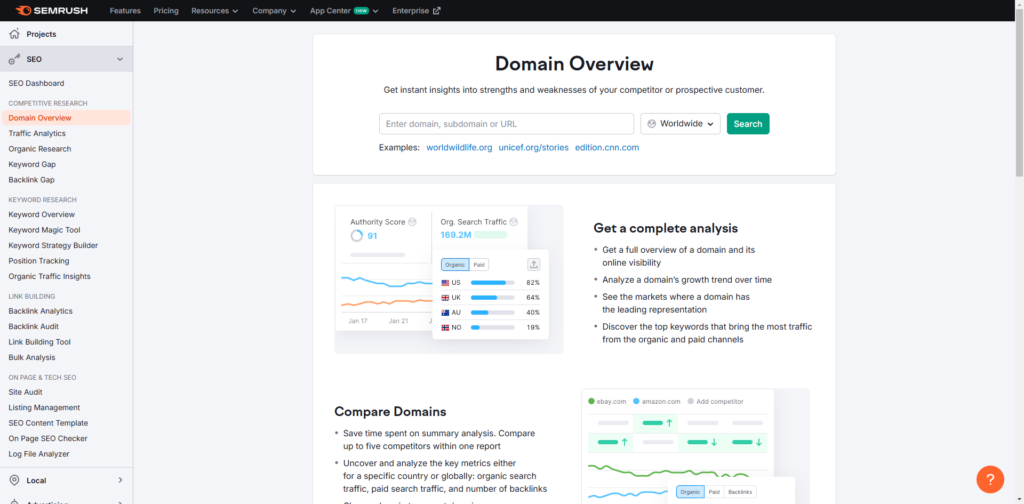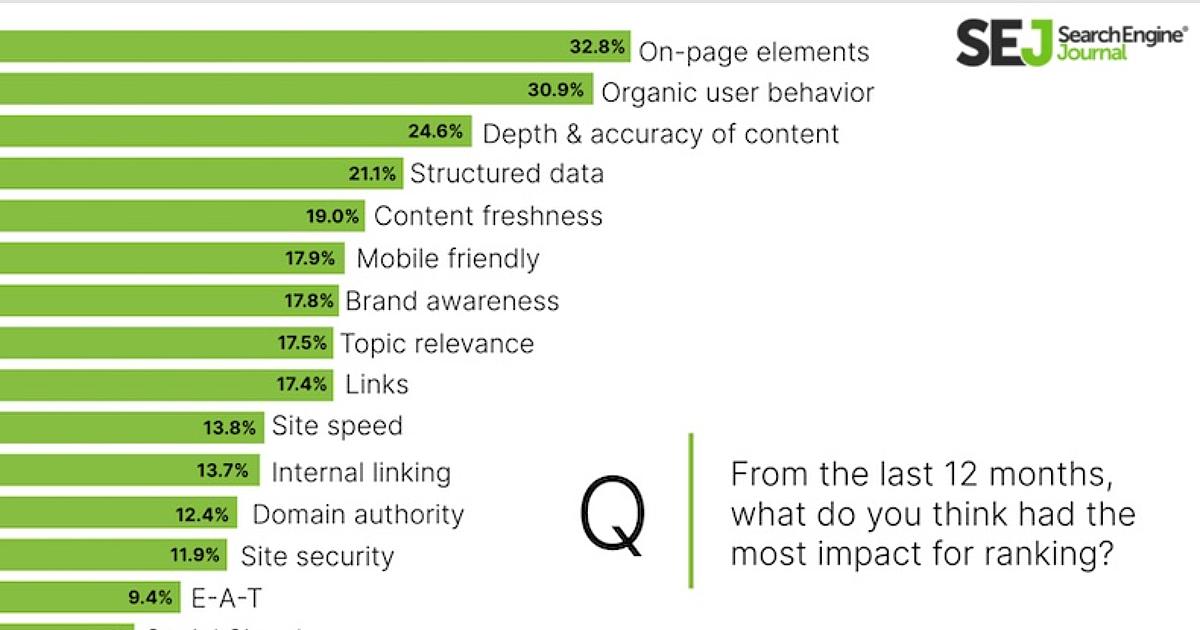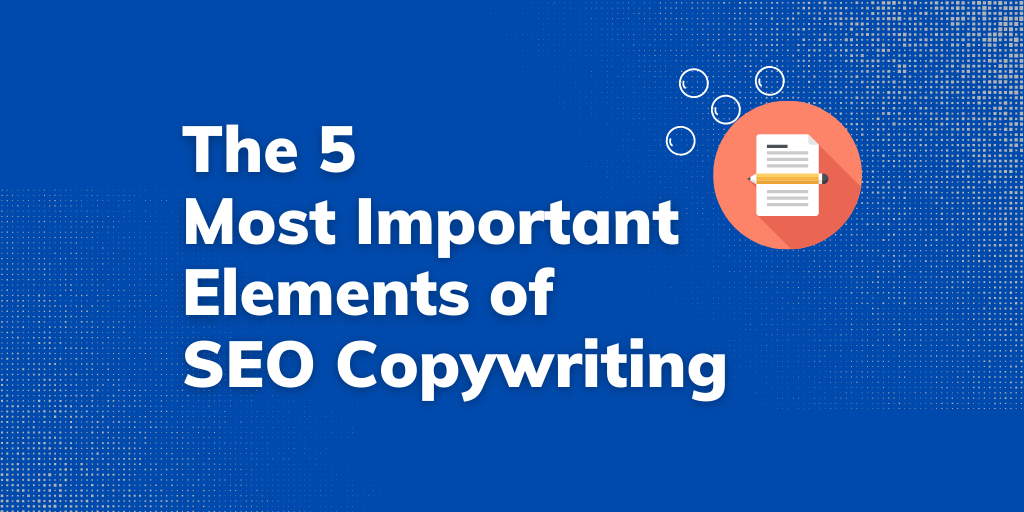The most important elements of SEO include keyword optimization, quality content, mobile-friendliness, page speed, backlinks, and proper meta tags to enhance visibility and ranking.
Understanding SEO’s key elements can boost your site’s performance. Imagine your website as a store. SEO is the map that guides customers to your door. Without it, your store remains hidden. Today, we delve into the core elements of SEO.
From keywords to backlinks, each part plays a vital role. Mastering these can significantly improve your site’s reach and engagement. Let’s explore the most important elements of SEO. This guide will help you understand and apply these elements effectively. Your journey to better SEO starts here.
Seo Basics
Understanding the basics of SEO is crucial for any website owner. SEO stands for Search Engine Optimization. It involves techniques to improve a website’s visibility on search engines. The goal is to attract more visitors to your site.
Seo Definition
SEO is a set of practices. These practices aim to increase the quantity and quality of traffic. This traffic comes from search engines like Google. It involves on-page and off-page activities. On-page activities include optimizing content and HTML. Off-page activities involve link building and social media engagement.
Importance Of Seo
SEO is important for several reasons. First, it increases your website’s visibility. More visibility means more potential customers. Second, SEO builds credibility and trust. Users trust websites that appear on the first page of search results. Finally, good SEO improves user experience. A well-optimized site is faster and easier to navigate.

Credit: www.demandjump.com
Keyword Research
Keyword research is the backbone of SEO. It helps find the terms people use in search engines. Using the right keywords can draw more visitors to your site. This process involves identifying popular words and phrases. These are the words your target audience uses online.
Choosing Keywords
Choosing the right keywords is crucial. Start by thinking like your audience. What words would they use to find your site? Focus on keywords relevant to your content. Avoid choosing too broad or too specific keywords. Balance is key.
Use a mix of short and long-tail keywords. Short keywords are one or two words. They have high search volume but also high competition. Long-tail keywords are longer phrases. They have less competition and can target specific audiences.
Keyword Tools

Several tools can help with keyword research. Google Keyword Planner is one such tool. It offers insights into search volume and keyword trends. Another useful tool is SEMrush. It provides keyword ideas and competitor analysis.
Ahrefs is also a popular choice. It helps find keywords and tracks their performance. Ubersuggest is a free tool. It suggests keywords and shows their search volume. Using these tools can help refine your keyword strategy.
On-page Optimization
On-page optimization is a crucial part of SEO. It involves making changes to your website to improve its visibility. This means optimizing each page’s content and HTML tags. These efforts help search engines understand your site better.
Title Tags
Title tags are one of the most important elements of on-page SEO. They appear in the browser tab and search engine results. A good title tag includes the main keyword. Keep it under 60 characters to ensure it displays well.
Here are some tips for effective title tags:
- Include your main keyword at the beginning.
- Keep it short and descriptive.
- Avoid keyword stuffing.
- Make it compelling to attract clicks.
Meta Descriptions
Meta descriptions are short summaries of your page. They appear below the title tag in search results. They should be engaging and include the main keyword.
Follow these tips for writing meta descriptions:
- Keep it between 150-160 characters.
- Include a call-to-action to encourage clicks.
- Use your main keyword naturally.
- Ensure it accurately describes the page content.
| Element | Best Practices |
|---|---|
| Title Tags |
|
| Meta Descriptions |
|

Credit: www.umbrellaconsultants.com
Content Quality
Content Quality is a critical element of SEO. It goes beyond just stuffing keywords. High-quality content helps your website rank better. It also engages users and keeps them coming back.
Content Relevance
Content relevance ensures your content matches user queries. Use keywords that fit naturally within the text. This approach makes your content more visible in search results.
Address the needs and interests of your audience. Create content that answers their questions. This increases the chances of your content being shared. Also, it helps establish your website as an authority in your niche.
User Engagement
User engagement is another crucial aspect of content quality. Engaged users spend more time on your site. They explore more pages and interact with your content. This behavior sends positive signals to search engines.
Here are some tips to boost user engagement:
- Use clear and simple language. This makes your content easy to read.
- Include visuals. Images and videos make your content more engaging.
- Break content into smaller sections. Use headings and subheadings.
- Encourage comments and feedback. This creates a community around your content.
Engaged users are more likely to share your content. This can increase your reach and improve your SEO.
Technical Seo
Technical SEO forms the backbone of your website’s search engine optimization. It involves optimizing the infrastructure of your site to ensure search engines can crawl and index it efficiently. This is crucial for improving your site’s visibility and ranking.
Site Speed
Site speed is a critical factor in Technical SEO. Search engines, like Google, prioritize fast-loading sites. A delay of even one second can lead to a drop in page views and customer satisfaction.
Consider using tools like Google PageSpeed Insights to check your site’s speed. These tools provide suggestions to improve load times. Implementing suggestions like compressing images, minifying CSS and JavaScript, and leveraging browser caching can significantly enhance your site’s speed.
Here’s a quick checklist to improve site speed:
- Enable compression
- Minify CSS, JavaScript, and HTML
- Reduce redirects
- Remove render-blocking JavaScript
- Leverage browser caching
- Improve server response time
- Use a content distribution network (CDN)
- Optimize images
Mobile Friendliness
Mobile friendliness is another crucial aspect of Technical SEO. More users access the web via mobile devices. A site that isn’t mobile-friendly risks losing a significant portion of potential traffic.
Google uses mobile-first indexing, meaning it primarily uses the mobile version of a site for ranking. Ensuring your site is responsive and provides a good user experience on mobile devices is essential.
Here’s how to check if your site is mobile-friendly:
- Use Google’s Mobile-Friendly Test tool
- Ensure text is readable without zooming
- Check that buttons and links are easily clickable
- Verify that content fits within the screen size
- Avoid using Flash as it is not supported on mobile devices
Improving mobile friendliness involves using responsive web design. This ensures your site adapts to various screen sizes and provides a seamless user experience.

Credit: www.marketingprofs.com
Backlink Strategy
Backlink strategy is a cornerstone of effective SEO. Backlinks, or inbound links, are crucial for search engine ranking. They act as votes of confidence from other websites. The more quality backlinks a site has, the higher it ranks in search engine results.
Quality Backlinks
Quality backlinks are links from reputable and relevant websites. These links signal to search engines that your content is valuable. Not all backlinks are equal. Links from high-authority sites carry more weight than those from lesser-known sites.
A quality backlink comes from a site that is:
- Relevant to your niche
- Has high domain authority
- Regularly updated with fresh content
Focus on earning backlinks from industry leaders. This boosts your site’s credibility and visibility.
Link Building Techniques
Effective link building techniques can drive quality backlinks to your site. Here are some proven methods:
- Guest Blogging: Write articles for reputable blogs in your niche. Include a link back to your site.
- Broken Link Building: Find broken links on other sites. Suggest your content as a replacement.
- Content Marketing: Create valuable content that others want to link to. This includes infographics, research studies, and comprehensive guides.
- Social Media Sharing: Share your content on social media platforms. Encourage others to link to it.
Use these techniques consistently. They help build a strong backlink profile. This improves your site’s SEO and search engine ranking.
User Experience
User experience (UX) is crucial for SEO. Google values websites that offer a positive user experience. Good UX keeps visitors on your site longer. This reduces bounce rates and boosts rankings.
Navigation
Navigation is key for a good user experience. It helps visitors find what they need quickly. Clear, logical menus guide users to important pages. Use simple labels. Avoid jargon. Place the most important links in the main menu.
Here’s a simple navigation checklist:
- Use clear labels for menu items.
- Limit the number of main menu options.
- Ensure all links are working.
- Include a search bar.
Navigation should also be consistent. Keep the same menu structure on all pages. This builds familiarity and trust. Users should always know where to find information.
Site Architecture
Site architecture refers to how your website’s pages are structured. A well-organized site is easier for users to navigate. It also helps search engines crawl your site. Use a hierarchical structure. Place the most important pages at the top. Group related pages together.
Consider this example of a simple site architecture:
| Level | Pages |
|---|---|
| 1 | Home |
| 2 | About, Services, Blog |
| 3 | Service 1, Service 2, Blog Post 1, Blog Post 2 |
Use internal linking to connect related pages. This helps users find more content. It also spreads link equity throughout your site. Each page should link to at least one other page. This creates a web of connections that aids navigation and SEO.
In summary, focus on clear navigation and logical site architecture. This improves user experience and boosts SEO.
Analytics And Monitoring
Effective Analytics and Monitoring are critical for the success of any SEO strategy. These elements help you understand what works and what doesn’t. You can make informed decisions to improve your website’s performance. Let’s delve into two vital aspects: Tracking Tools and Performance Metrics.
Tracking Tools
Using the right tools is essential for accurate SEO analytics. Here are some popular options:
- Google Analytics: Offers detailed insights into your website traffic and user behavior.
- Google Search Console: Helps monitor your site’s presence in Google search results.
- SEMrush: Provides keyword tracking and competitor analysis.
- Ahrefs: Offers backlink tracking and detailed site audits.
Each tool has unique features. They provide data critical for optimizing your website. Consistent monitoring with these tools helps you stay ahead in the SEO game.
Performance Metrics
Understanding key performance metrics is vital. They tell you how your SEO efforts are paying off. Here are some crucial metrics to track:
| Metric | Description |
|---|---|
| Organic Traffic | Measures the number of visitors from search engines. |
| Bounce Rate | Percentage of visitors who leave after viewing one page. |
| Average Session Duration | Time visitors spend on your site. |
| Pages Per Session | Average number of pages viewed per visit. |
| Conversion Rate | Percentage of visitors who complete a desired action. |
Tracking these metrics helps you understand user behavior. You can make data-driven decisions to enhance your SEO strategy. Regular analysis ensures you are meeting your goals and improving your website’s performance.
Frequently Asked Questions
What Are The Key Elements Of Seo?
Key elements include keyword research, on-page optimization, quality content, backlinks, and user experience. These factors help improve your site’s visibility.
How Does Keyword Research Impact Seo?
Keyword research identifies search terms your audience uses. Proper keywords improve your site’s relevance and ranking on search engines.
Why Is Quality Content Crucial For Seo?
Quality content engages users and meets their needs. It also encourages longer visits and shares, boosting your site’s authority.
How Important Are Backlinks For Seo?
Backlinks are crucial as they signal to search engines that your content is valuable. High-quality backlinks improve your site’s credibility.
Conclusion
Mastering SEO elements is crucial for online success. Focus on quality content. Optimize keywords. Improve site speed. Use mobile-friendly design. Build backlinks. Utilize social media. Monitor and adjust strategies. Stay updated with trends. Implement these elements consistently. Your website will rank higher.
Traffic will increase. Business growth will follow. Remember, patience and persistence are key. Keep learning and adapting. SEO is an ongoing process. With dedication, results will come. Happy optimizing!

